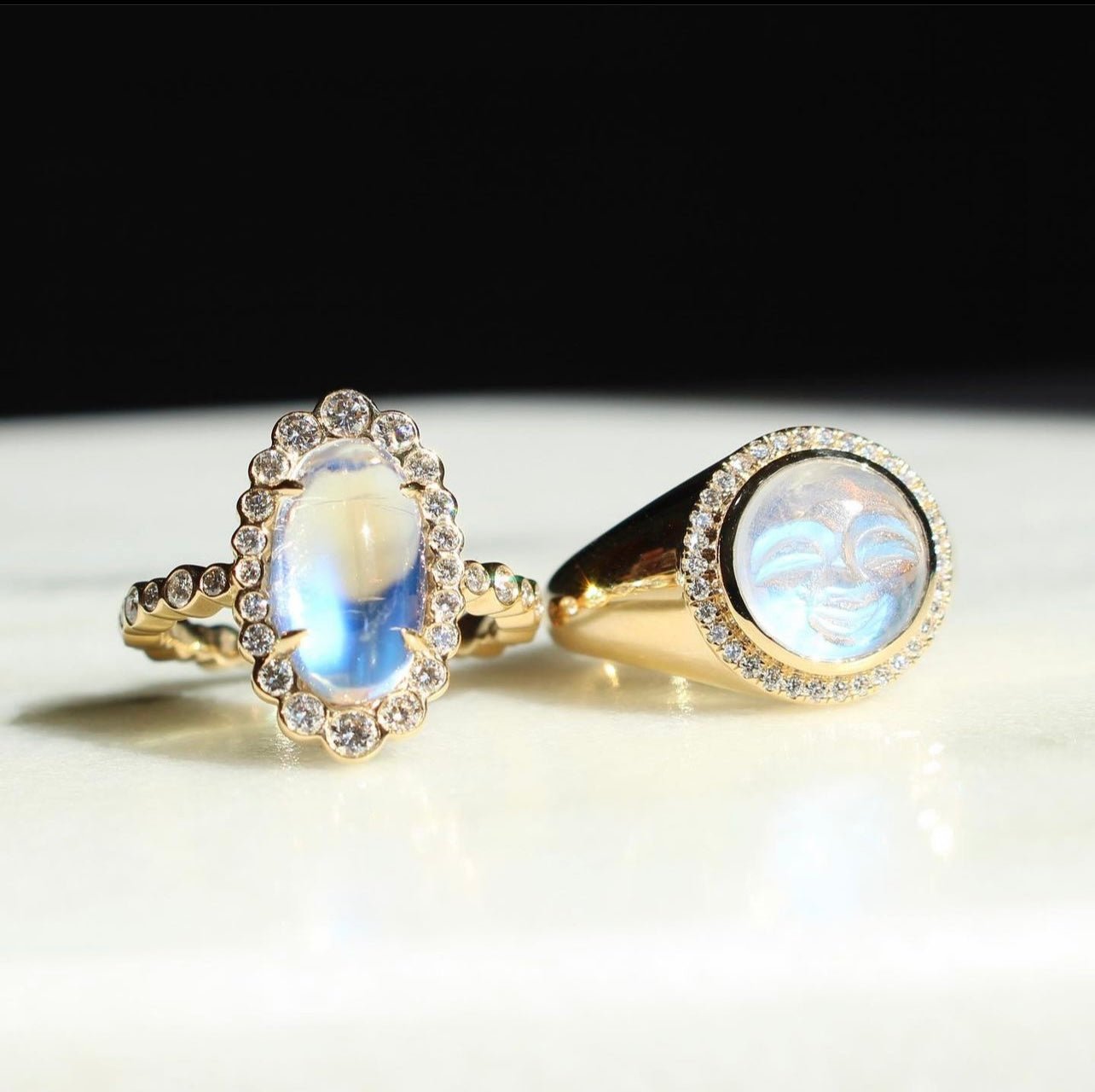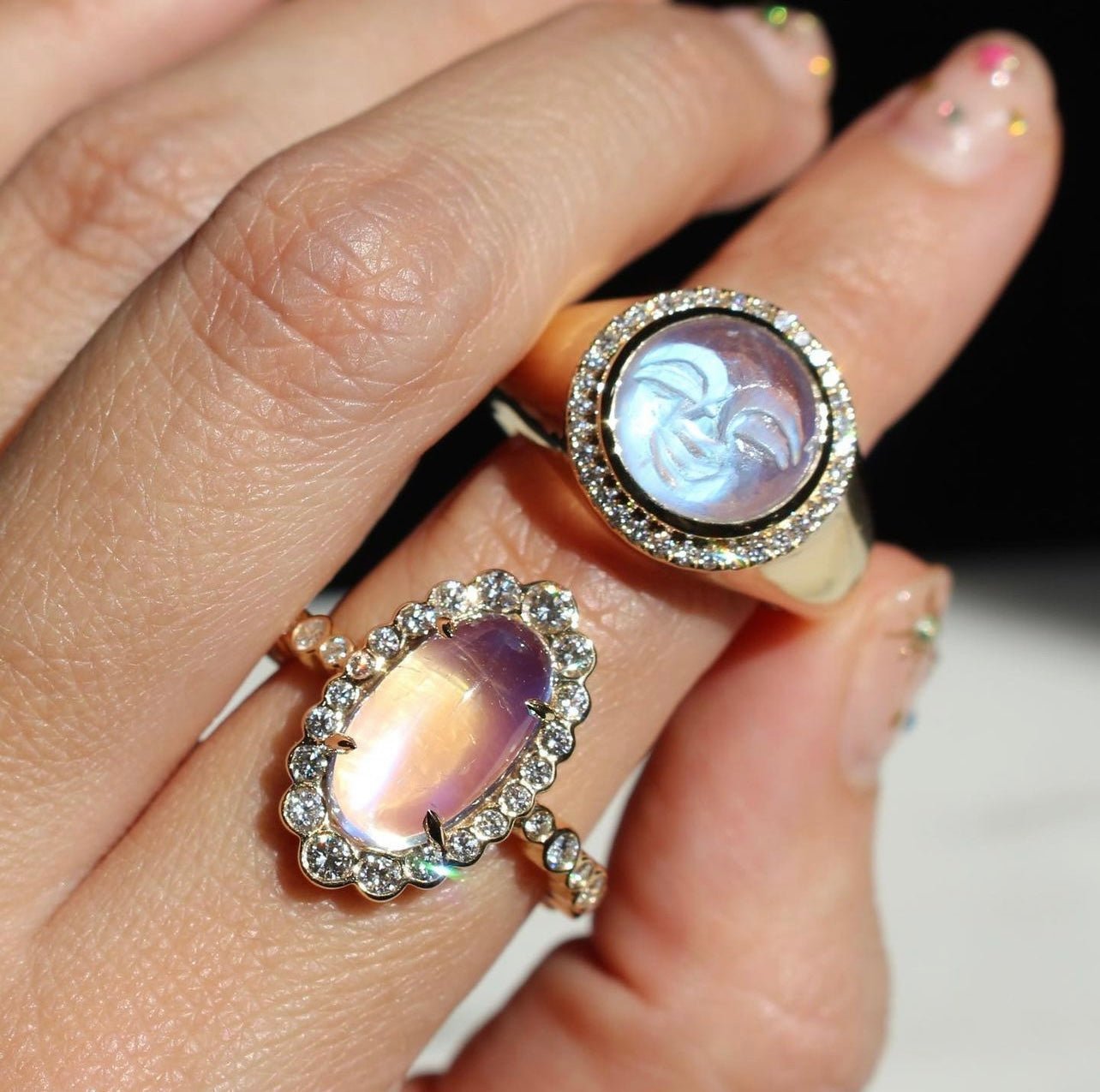When it comes to choosing a new jewelry piece, you probably have a lot of preconceptions. You grew up hearing that diamonds are a girl’s best friend from top celebrities. You also might have heard a relative tell you, “diamonds are forever.”
Whether you’re celebrating a holiday, a birthday, or shopping for an engagement ring, diamonds are always in vogue. However, it’s time to consider a few more options. The world of gemstones has drastically expanded since those days of diamond mania. It actually was far more expansive decades ago, too — you might just not have noticed.
At Mark Henry Jewelry, our mission is to bring exotic gemstones to the masses. We believe in fine jewelry that is transparent in origin and design process. We understand that diamonds will always have their time and place, but we cater to a more adventurous connoisseur. Bold colors and unique designs can still be timeless!
That is why we are such big fans of alexandrite. This Russian-bred gemstone popped up worldwide throughout the 20th century, solidifying itself in the fine gem hall of fame. It is famous for its green-to-red color change and incredible color intensity. It can be added to any jewelry piece to instantly elevate a look.
If you’re stuck between old or new looks, we’re here to assist. There are benefits and pitfalls to both options. Finding the best choice for your taste and lifestyle is what will guarantee your satisfaction.
The Pros and Cons of Diamonds
Diamonds have set so many trends over hundreds, and thousands, of years. They have been used in architecture, as embellishments on clothing, and most importantly in jewelry. With a 10 ranking on the Mohs Scale of hardness, they are perfect for rings and bracelets.
Pro: Tradition
If you’re a traditionalist, diamonds are for you. Their shine is enchanting, and they always make an entrance. You probably grew up admiring a diamond ring on the hand of an older relative, and this imagery isn’t something one can easily shake. In fact, diamond rings are one of the most iconic symbols of love that you can give someone.
Jewelry is often sentimental by its very nature. It’s with us for some of our biggest life moments. Families will pass on jewelry to their loved ones, who then wear the piece with pride. If you are gifted a diamond ring, but the style doesn’t mesh with your wardrobe, you can always repurpose the stone into a new setting or add additional gemstones.
Con: Connotations
The association of diamonds with love and engagement rings can be a double-edged sword. Just because you love the stone you were given doesn’t mean that you want that connotation. A simple diamond ring worn on the left-hand ring finger signifies marriage (in Western cultures).
To avoid this, try a different colored gem. You can also always explore colored diamonds, which come in a wide variety.
Pro: 4Cs
A great thing about diamonds is that they’re easily quantifiable in quality. The 4Cs is a rating system devised by the Gemological Institute of America. It gives a score to the color, cut, clarity, and carat weight of a diamond. With this score, you can determine the true value of the piece and whether or not it is worth its price.
With other gemstones, the value might not be as straightforward. You’re also more likely to find a jeweler in a store who can break down the 4Cs on the spot before they can go into the specific attributes of an exotic gem. This doesn’t mean it's impossible to get certification ratings on other stones — you might just need to reach out to a professional gemologist.
Pro and Con: Imitations Common
Since diamonds are so well known and widespread, it is easy to find imitations. You might be familiar with cubic zirconia, made in a lab with zirconium dioxide. They have amazing clarity, but this is what can make them so obviously fake. They also rank as a 8.5 on the Mohs scale, which is impressive but not comparable to real diamonds.
For some, having a cost-effective diamond option is wonderful. They don’t have to break the bank to get the shine they want, and most wouldn’t be able to tell the difference. For others who prefer to collect natural diamonds, these imitators can be frustrating and they might need to keep their guard up when shopping.
Alexandrite Renaissance
At Mark Henry Jewelry, we are alexandrite lovers. We understand how rare and precious the gemstone is, and we want to continue its dynasty with our designs. It is part of the chrysoberyl family and some pieces even tout a cats-eye chatoyancy effect. The stone sits at a 8.5 on the Mohs scale, which is durable but not as impressive as diamonds.
Pro: Rich History
Alexandrite has Russian mineralogist Nils Gustaf Nordenskiöld to thank for its discovery. After extensive edits, this gem was finally found in the Ural Mountains. At first, it presented as merely an emerald. Once the sun set and its color transformed into ravishing reds, Nils and his teams were shocked.
The Czar Alexander II of Russia was the inspiration behind alexandrite’s name. In 1834 it became a phenomenon among the elites of the nation, utilized in jewelry and other royal placements. It wasn’t necessarily accessible to the general public, but it was revered by all.
This association with royalty is similar to the association of diamonds with wealth. However, it takes the allure one step further. By owning a piece of history that is far more recent than the dawn of diamond usage, you’re connected to another world of glory and power.
Pro: Extremely Rare
Diamonds are touted as incredibly rare. Did you know that alexandrites are actually far rarer than diamonds? They surpass the rarity of emeralds and rubies as well. Its color change requires a perfect mixture of beryllium and chromium, elements normally not found in the same rocks.
Much of this has to do with their limited resources. Since its discovery in Russia in the 1830s, all of this source was depleted due to high demands. Alexandrite was discovered in Sri Lanka (with a more olive appearance in sunlight) and Zimbabwe, where they’re more emerald in color.
Brazilian alexandrite is the finest found since the 1800s, and most closely resembles the Russian stones. This is where we source our alexandrite at Mark Henry Jewelry. We utilize a family-run mine in the country so you know that you’re wearing ethically produced gemstones.
Pro and Con: Lab-Created Finds
Just like diamonds, alexandrite can be made in a lab. However, imitation alexandrite is a lot less common than imitation diamonds. This is good news because it means that your lab-created alexandrite is almost identical to the real deal.
If you buy a hydrothermal alexandrite, your cost won’t be significantly lower than a natural one. In fact, you’ll still be shelling out more on that piece than another type of stone that is naturally made.
If you are searching for natural alexandrite, be sure to check the refractive index. Corundum and spinel are both common forms of synthetic alexandrite with refractive indexes of 1.762 - 1.770 and 1.73, respectively. Real alexandrite has an RI of 1.745-1.755 and is doubly refractive.
Cost Comparison
Diamonds can range significantly in cost because they are so different from each other. It depends on where your diamond comes from, its ranking on the 4Cs scale, and whether or not it is wearable. How many diamonds are included in a piece of jewelry is a significant determining factor, too.
For example, an alexandrite that has the highest clarity possible and is 1-1.99 carats could cost anywhere between $20,000-$35,000. A diamond with a comparable clarity and carat weight (1-1.99ct) would go between $24,000-$29,000. While the ranges are similar, it is clear that alexandrites tend to sell for more money.
The Choice Is Yours
After carefully considering the differences between both alexandrite and diamonds, the choice is ultimately up to you. Most of it comes down to your style. Do you prefer to turn heads when you walk into a room (alexandrite), or do you like a more demure and tasteful approach to jewelry (diamonds)?
What is important in your shopping experience, regardless of what you purchase, is that you’re getting what you pay for. Make sure to consult with a jeweler on-site or online before making any big decisions. Request authentication from accredited gemologists for peace of mind and quality guarantee.
Sources:
Alexandrite Value, Price, and Jewelry Information | International Gem Society
Learn How to Buy a Diamond with the GIA Diamond Buying Guide | GIA


“Synthetic” and “imitation” are not synonyms. Synthetic alexandrite is alexandrite. Imitation alexandrite isn’t alexandrite.
This statement is false: “Corundum and spinel are both common forms of synthetic alexandrite”. What you wanted to say is “forms of imitation alexandrite”.